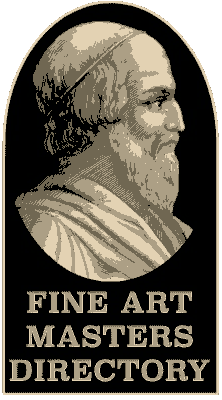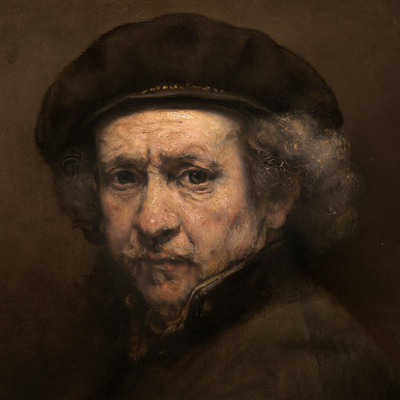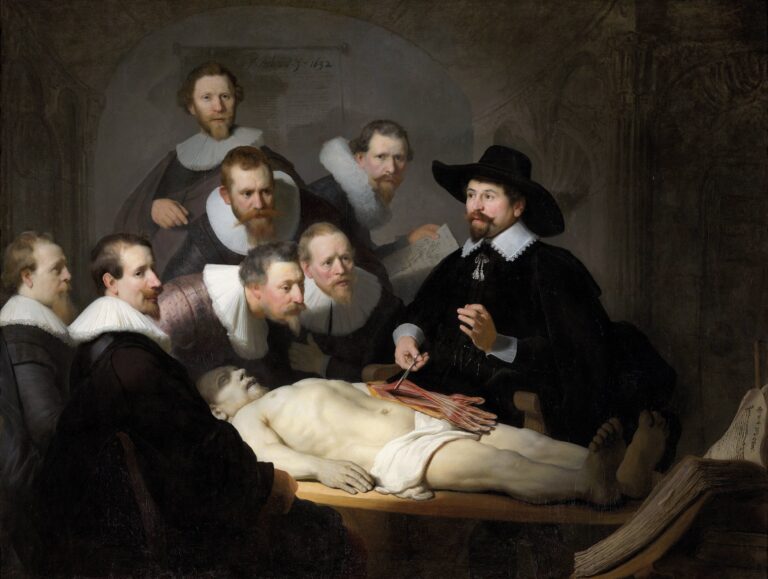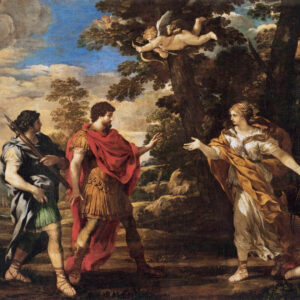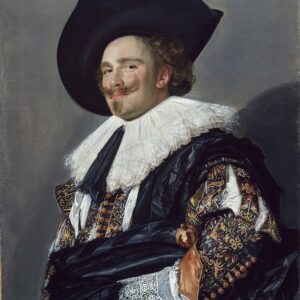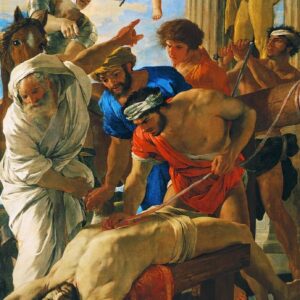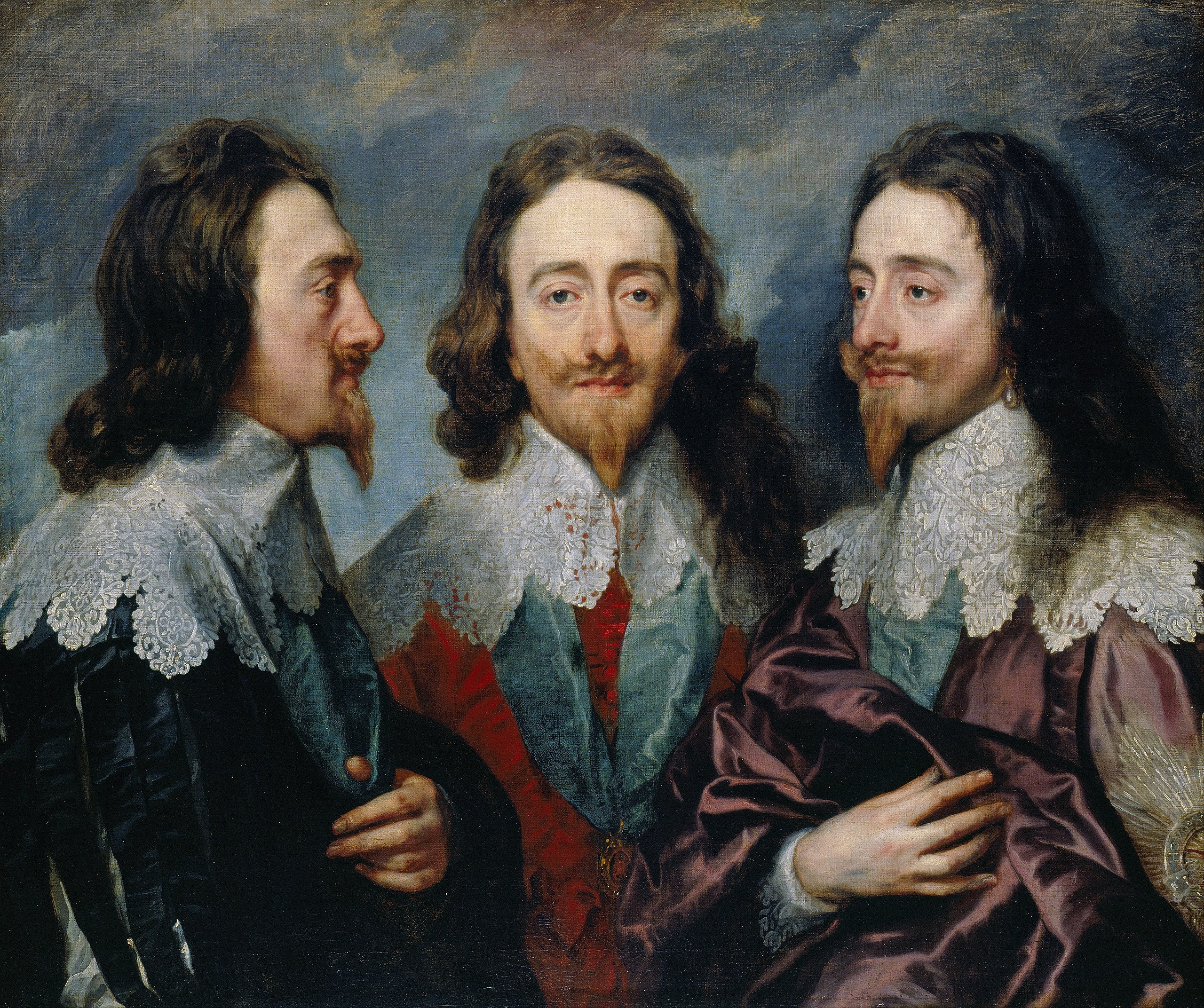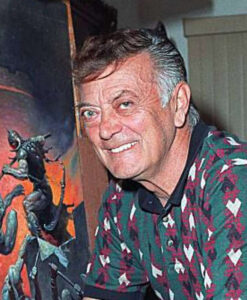Rembrandt Harmenszoon van Rijn (/ˈrɛmbrɑːnt/, also /-brænt/,[2] Dutch: [ˈrɛmbrɑnt ˈɦɑrmə(n)soːn vɑn ˈrɛin] (![]() listen); 15 July 1606[1] – 4 October 1669) was a Dutch draughtsman, painter, and printmaker. An innovative and prolific master in three media,[3] he is generally considered one of the greatest visual artists in the history of art and the most important in Dutch art history.[4] Unlike most Dutch masters of the 17th century, Rembrandt’s works depict a wide range of style and subject matter, from portraits and self-portraits to landscapes, genre scenes, allegorical and historical scenes, and biblical and mythological themes as well as animal studies. His contributions to art came in a period of great wealth and cultural achievement that historians call the Dutch Golden Age, when Dutch art (especially Dutch painting), although in many ways antithetical to the Baroque style that dominated Europe, was extremely prolific and innovative and gave rise to important new genres. Like many artists of the Dutch Golden Age, such as Jan Vermeer of Delft, Rembrandt was also an avid art collector and dealer.
listen); 15 July 1606[1] – 4 October 1669) was a Dutch draughtsman, painter, and printmaker. An innovative and prolific master in three media,[3] he is generally considered one of the greatest visual artists in the history of art and the most important in Dutch art history.[4] Unlike most Dutch masters of the 17th century, Rembrandt’s works depict a wide range of style and subject matter, from portraits and self-portraits to landscapes, genre scenes, allegorical and historical scenes, and biblical and mythological themes as well as animal studies. His contributions to art came in a period of great wealth and cultural achievement that historians call the Dutch Golden Age, when Dutch art (especially Dutch painting), although in many ways antithetical to the Baroque style that dominated Europe, was extremely prolific and innovative and gave rise to important new genres. Like many artists of the Dutch Golden Age, such as Jan Vermeer of Delft, Rembrandt was also an avid art collector and dealer.
Rembrandt never went abroad, but he was considerably influenced by the work of the Italian masters and Netherlandish artists who had studied in Italy, like Pieter Lastman, the Utrecht Caravaggists, Flemish Baroque, and Peter Paul Rubens. After he achieved youthful success as a portrait painter, Rembrandt’s later years were marked by personal tragedy and financial hardships. Yet his etchings and paintings were popular throughout his lifetime, his reputation as an artist remained high,[5] and for twenty years he taught many important Dutch painters.[6]
Rembrandt’s portraits of his contemporaries, self-portraits and illustrations of scenes from the Bible are regarded as his greatest creative triumphs. His self-portraits form a unique and intimate autobiography, in which the artist surveyed himself without vanity and with the utmost sincerity.[4] Rembrandt’s foremost contribution in the history of printmaking was his transformation of the etching process from a relatively new reproductive technique into a true art form, along with Jacques Callot. His reputation as the greatest etcher in the history of the medium was established in his lifetime and never questioned since. Few of his paintings left the Dutch Republic while he lived, but his prints were circulated throughout Europe, and his wider reputation was initially based on them alone.

The Prodigal Son in the Tavern, a self-portrait with Saskia, c. 1635
In his works he exhibited knowledge of classical iconography, which he molded to fit the requirements of his own experience; thus, the depiction of a biblical scene was informed by Rembrandt’s knowledge of the specific text, his assimilation of classical composition, and his observations of Amsterdam‘s Jewish population.[7] Because of his empathy for the human condition, he has been called “one of the great prophets of civilization”.[8] The French sculptor Auguste Rodin said, “Compare me with Rembrandt! What sacrilege! With Rembrandt, the colossus of Art! We should prostrate ourselves before Rembrandt and never compare anyone
Name : Rembrandt Harmenszoon van Rijn
Born : 1606
Died : 1669
Art Style & Movement : Baroque
Main Field/s : Painting & Drawing
Region/Nationality : Dutch
Artist ID : 4976
Facebook
Twitter
LinkedIn
Pinterest
